Dissecting Cadavers & Finding Grace – Meet Helen Noakes
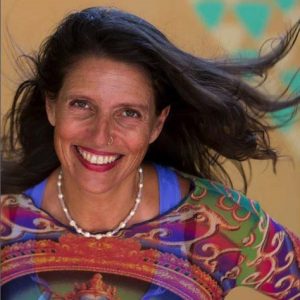
You know it’s going to be an interesting Yoga class when the teacher begins with describing her experience of dissecting cadavers – the sheer awe it evoked, the bright yellow of the fascia, and the certainty it brought: that our mind, spirit, soul are all in our body. It’s all merged into the physical body. And, in her own words – There’s no separation in the body. Skin isn’t separate from membrane, membrane isn’t separate from muscle. Muscle’s not separate from bone. Everything is interconnected. If that’s happening on the inside, it must be happening on the outside. Even though it’s a different matrix.
Some months ago I had the happy fortune of meeting the wonderful Helen Noakes and experiencing her decidedly unusual Yoga classes at the Barcelona Yoga Conference. Helen has been teaching Yoga since 2002. Yoga brought her to Goa, India where she’s been living for 21 years and running a Yoga training school called Yoga Health Mandala. She has also taught Yoga and massage in the USA, Denmark, Sweden, Iceland, Finland, Brazil and she’s finally moving to Greece this summer. Below is our freewheeling conversation where she gives us a peek into her wide range of experiences and insights – what makes Scaravelli Yoga musical, softness as the core of strength, dissecting cadavers to study anatomy, having tension with integrity in the body, the pelvic floor being more of a wall, individuating the practice, softness as the core of strength, teaching from one’s personal interpretation, and the meaning of grace and magic. And an Adonis with a Shire horse shows up at some point too, in case you weren’t already intrigued 🙂
Her website is www.helennoakes.net and her online classes are on Ekhart Yoga at https://www.ekhartyoga.com/teachers/helen-noakes.
She shares snippets of her teachings on Instagram @helennoakesyogachavutti
Tell us a bit about Scaravelli Yoga and what excites you about it.
The Matriarch of this approach to Yoga – Vanda Scaravelli – never encouraged naming it after her. She was an advocate of asking her students to teach from their personal interpretations of her offerings, which changed and evolved on a daily basis. This style is what I would call musical, as Vanda was an accomplished musician herself. Her teacher was Iyengar so those are the roots of the teaching.
There are no set methods or sequencing. People are invited to be aware of what’s happening behind the skin. There is a strong emphasis on feeling the spine and how we can strengthen our relationship to the earth and the breath. It’s based on listening to intuition and responding to our environment. Deep relaxation and alertness can be enjoyed in the natural waves and spirals that occur in the body when joints release or when there is an expansion in the body. It is dynamic and deeply releasing in a way you least expect. Each class is completely unique and unfolds in the moment. The postures and breathing exercises are offered as frameworks to get to know your body. The closest description in modern terms is a somatic experience.
Turns out you’ve been dissecting humans lately. I loved how you described that in the class. Can you tell us more about it?
My Yoga teacher Gary Carter is an exquisite artist and an athlete. I’ve been on a dissection course with him and Julian Baker who teaches soft tissue release bodywork. They teach dissection courses for Yoga teachers. Human cadavers from people who’ve donated their bodies.
Takes a lot of nerve to walk into a room to do that, I suppose?
I was part squeamish, part afraid of death – particularly my own. And part fear of the unknown – I didn’t know what was going to come in front of me. I chose a woman to dissect. The female anatomy has been a very strong pull in my world – particularly the uterus and the womb energy. It was completely interesting to dissect both the male and the female. I wanted to see the pelvic wall – it’s not a pelvic floor, it’s a wall. Part of it can be considered as a floor, but it’s a wall. It shaped like a bowl and tilted up and back – a bowl on its edge. And the fruit of the bowl is our intestines, our reproductive organs.
I held this woman’s brain and lungs. We filled this woman’s lungs with air, and I could feel her lungs expand in my hands, in all directions. When it’s a body, it’s a body – there’s no masculine or feminine. My beliefs change all the time, but right now I believe that we are a product of our experiences. It’s up to us to break through those patterns. For me what’s important is tuning into the earth energy or the source. My teacher says – Before the source there is always love. So my teacher Elizabeth Pauncz says about Vanda, that the most clear thing she remembers about her is the love that she emanated. That I would say is what comes through in dissection – more than masculine or feminine – the love and respect you have, to be so intimate with someone – whether they’re masculine or feminine. The anatomy of a female pelvis is totally different to the anatomy of a masculine pelvis. The overall shapes and sizes are different. But what I learned is that at the end of the day, we are all one.
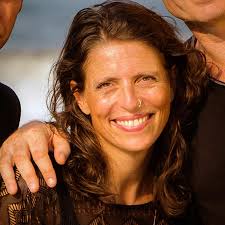
So the reference point is that we are all one, and the differences set in later, branching off from one starting point?
Yes, I really like what you’ve just said there. Yesterday I had a woman in class with a wrist injury from her Chaturangas. And I can bet you a million dollars that she’s been taught by a man. No criticism to anybody’s teaching, but it has been my experience that these extremely powerful muscle-oriented postures are taught to the person teaching them and not taught to the person in front of them. My Chaturanga is going to be very different from yours, depending on mobilization of the shoulders, abdominal strength, the length of your limbs, your physiology and how you feel about yourself and how you’re feeling that day. And technique. How a man would go down into Chaturanga and come up through is totally different because their anatomy and physiology is different. Or they move, train and mobilize differently. So it’s not one size fits all. I’ve been taught that everybody’s body is unique, so you give options the whole time. As Elizabeth was saying in class, you have to find what’s good for you.
You individuate the practice.
Yes, that is the magic. How to keep it individual and safe for everybody, simultaneously keeping the whole group together.
How do you do that with 20 people in a class?
I let go. And I call in my helpers. My ancestors, my guides. I call in Elizabeth energetically, I call in Vanda, any ancestors who happen to be around. I say – Guide me, I’m yours. I want to be the best I can in this moment, and I’m open to you. So I have an idea of what I’m going to teach. Here is the group and I don’t know what energy they’re going to show me, but I’m going to respond in the moment.
And you feel that energetic help flowing through you? Can you give me an example?
I get goosebumps all over or my feet start tingling. I feel a general resting in myself, in my center. And it feels just right. I’m enjoying it and it doesn’t feel like an effort. People are responding, there’s an energetic flow. So I call it an energy field that we create, and we are in that energy field. So I bask in that energy. I’ve seen that energetic help land on people in the class as well. When their spine ripples, their feet wake up, or they have a radiance in their face.
I do believe in this, by a great teacher called David Deida – for want of a better word – a Tantric sexual teacher. So he says the most powerful force on earth is feminine radiance. All men melt at feminine radiance. Dear Lover is a great book for all the amazing single women, and The Way of the Superior Man is a great one for men.
What would you say is the link between sexuality and spirituality?
I think they’re the same – for me, the way I experience it. How can they be separated? I had a great teacher Dr Jacqueline Hobbs. She’s called ‘the oracle girl’. One of the things I remember her teaching is – body, spirit, soul are no longer separate. We have embodied it all. It’s all merged into the physical body. So we don’t need to look outside of ourselves for spirituality. It’s all within the body. So sexuality is not separated from spirituality.
We give them these different labels and put them in separate boxes?
Yes. It’s very easy to be mindful and loving when you’re sitting in a cave by yourself not talking to anyone. Michaela Boehm who’s also a wonderful tantric sex teacher said it’s very easy to be loving when you’re alone but when you’re in a relationship that’s when the shit hits the fan.
That’s the lab, isn’t it?
Yes, thank you, that’s the lab. My real challenge is finding spirituality and love in a relationship because my past, my patterns, my jealousy – all of that gets in the way. My spirituality goes out the window. I’m the first to admit that I have issues. I know that I have the insecurities and they might never go away, but as I get older I can handle them better. I can’t dissolve it. But what I can do is change my relationship to those patterns. When they come up, it’s really strong.
But you do have a self-awareness about them, apparently?
Trying to. I’m pre-menopausal so I have huge amounts of hormones rushing through me. I take herbs and natural supplements to help me navigate that. I’m a fiery person and my emotions rule my life. So it’s about riding that wave with all these hundreds of emotions rushing at me the same time. So coming back to sexuality and spirituality, I think there’s definitely the going-off-the-rails and then coming back to balance, but I think they cannot be separated. Because we are humans trying to be loving. There’s no separation in the body. Skin isn’t separate from membrane, membrane isn’t separate from muscle. Muscle’s not separate from bone. Everything is interconnected. If that’s happening on the inside, it must be happening on the outside. Even though it’s a different matrix.
You said something about having strength and softness in the class. Tell us about that.
When I first saw an Ashtanga practitioner, she was practicing series 3. It was a self practice. I stopped my practice and watched her. And I realized it was so powerful what she was doing. It was breath moving through space. Even though she was expressing very difficult positions, she made it look easy because her body flowed, there was softness. So that was a clue and also in my teaching, we have been told that the softer you are in your approach to yourself and the practice, that can be seen as the core of your strength. So I can be in a plank position, and feel that extreme strength flowing through me. But if you were to touch me I would be able to respond – like a wave. So there is that softness within. So you could see my breath moving through my spine. You can see my belly still being moved by my breath.
So there’s a fluidity in your body, you haven’t turned it into a brick.
Yes. And there’s many cores in the body. The deep inner body is strong and grounded. And the outer body is rippling and responding.
An unconventional definition of strength.
Yes. My teachers are totally off-the-wall, revolutionary and different. Vanda Scaravelli and Gary Carter. It’s a misconception that Scaravelli Yoga is a slow kind of restorative Yoga. It is deep, demanding and challenging. You get to see your shadow. You have to stop, wait, respond. And to not allow yourself to push takes a lot of focus and concentration. Especially me because I can be competitive. I would pull my toes toward me or try and stretch my hamstrings. So to actually stop that response takes real patience. Because my natural instinct is to do. Get it done, do it, pull it, force it. The kind of pushing through that most of us do.
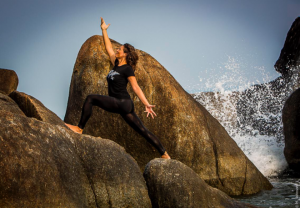
I’ve noticed my definition of strength has changed over the years. It used to be about powering through – which is one kind of strength. But of late it seems that in gentleness lies real strength. I read this quote – There is nothing as strong as gentleness and nothing as gentle as real strength.
Beautiful. That to me is grace. You can feel it in your own heart. And your idea of strength is such a reflection of where you are – emotionally, physically. Your biochemistry, your environment and how you take it on. How you respond to others.
You said holding creates tension. And I’ve often heard that holding a pose builds endurance and strength. You seem to have a whole other paradigm.
I definitely have another view of that. I can understand why people say holding builds endurance. Holding a posture for me is much more about commitment, focus, breath and stamina. If you’re holding something that’s creating pain and tension, you’re just making that tension more intense. That is simply not healthy for your nervous system.
It trains your nervous system to have more tension?
Yes, and to live with pain. It depends what is meant by ‘hold’ because ‘holding’ in English creates a feeling of contraction. I would much rather go into the pose a few times with awareness, and see how deep I could go and explore those limits, those edges which are elastic. Our limits are elastic. If I was to explore tension, and if my body says yes, I would dive into that tension and explore it. See if that tension has a message. So maybe it can be an inquiry into the body. There’s tensegrity that holds our body together. We need tension – to walk, to breathe, to stand up. Tensegrity has a purpose – which is tension with integrity.
That’s the basis of a lot of the teaching.
So this tensegrity is holding us together like a tent. You need the tent pegs to keep up the pole in the middle. And you need the tension in a canvas to paint on it.
And in a sail on a boat.
Yes, so we need that. If there’s excess tension, lactic acid builds up in the body from habitually contracting muscles in the body that we are not conscious of. So if you’re holding, you might possibly be adding to that rather than unraveling it and getting to the bottom of it. So for example, I’ve got my hands in the air right now and if my shoulders are up by my ears and I’m holding there, I’m just exaggerating the pattern I already have. Rather than exploring, lifting my hands up in a relaxed way. Moving them up and down a few times, exploring different ranges of motion before coming into the pose.
And this is also teaching your mind either to be more tensed or more flowy and relaxed.
Yes, the mind and body aren’t separate. Your biology and your biography are the same. The story of who you are is in your biology.
Whether you like it or not, you can’t hide. As far as I know, apparently this is how it is. Whatever has happened to us, traumatic or not, is expressed through our body. So if there is anxiety and depression, it might show up in movements. Caroline Myss talks about how your biology and biography are the same.
I heard you say in the class there are 100,000 to 200,000 nerve endings in each foot. And you place a lot of emphasis on the feet in your teachings. Can you tell us more?
If you look at the foot, there’s nothing linear about it. It’s curvaceous and wavy. To cut a very long story short, I would say if you want to get to know yourself, get to know your feet. There’s a map of your body in your feet. There’s also a map in your ears, there are maps continuously in your body. When you massage the ears, you’re touching the tissue of the brain. With the feet, because they have all those sensory nerve endings, they come alive with our connection to the earth. And we have 3 main kinds of sensory receptors. We have exteroception i.e. we gather information from the earth. We have proprioception ie. how we find ourselves in space. And we have interoception i.e. feeling how we have internal responses behind the skin. That is what I’m interested in. When we massage our feet and we place our feet on the ground, some of us say we feel aliveness, more earthed etc. These subtle feelings I’m interested in.
So the superficial fascia – there’s this yellow fluffy layer that my teacher calls the ‘yellow fluffy onesie’. It’s bright yellow and it’s made of delicious fat and adipose tissue. We have all our capillaries, veins and networks within that fascia. It is also extremely sensitive. And we’re living in that!
I had no idea we are yellow on the inside 🙂
Yes. So the skin is like a fish skin, it’s got scales and underneath it’s bright yellow and oily. Coming back to the feet, get to know the earth under your feet. It like plugging in, recharging your batteries. It gives us a lot of negative ions. There’s a really good movie called Grounded that talks about this.
Yes I’ve seen some of it. Also the way keep our feet encased in shoes, we reinforce the disconnection.
Yes, the shoe is a corset. I really recommend giving yourself a foot massage everyday.
You said in one of your classes that you stole body development exercises from someone? Who was that and can you tell us more?
It’s Body SDS – Body Self-Development System. Developed in Denmark by a man called Bengt Valentino. It’s a very specific kind of body work and very intense. The foot exercises in it are amazing. You can download the BSDS app or go to their classes in Copenhagen.
I’d like to hear your take on the ‘guru’ culture, the culture of idealization that we see so much in India and even in the West.
Vanda Scaravelli writes in her book that the age of gurus and priests is over. I’ve been in many ashrams and I’ve followed many gurus and I really enjoyed that time. I was a seeker. I think gurus and great teachers have a very important role to play, as long as you don’t attach to them, become obsessed with them or lose sense of yourself. It can become an addiction. I enjoyed being at Osho’s ashram and I’ve met Mata Amritanandamayi Ma many times and it’s been incredible. But I’m not into idealizing anyone. I can totally understand Bhakti Yoga. It’s a beautiful practice. I can appreciate all of them but I don’t feel like I need to be in them. Living in Goa for 20 years has taught me so much! There’s two sides to the ‘guru’ culture. On one, they can really help people move on to the next stage in their life. Which is wonderful. On the other side, I also see people being preyed upon for their vulnerability and taken advantage of. I see a lot of Westerners do that. They happily kiss their feet or pedestalize them.
Not only Westerners, but Indians as well.
Oh yes of course. A very good friend of mine has pictures of her teachers on her wall, Sivananda and some others. I asked her, “Why don’t you have a picture of yourself up? What’s the difference between you and them? Why would you put them above yourself?” To test her, I asked her if those pictures were of her mum and dad. And she said that they had indeed been like her mum and dad. So for her, they occupied that role and I respect that. At the same time I also saw that she saw herself as separate from them.
Separate and below?
Yes, both. Separate and below. That’s the problem.
What would you say about the proliferation of people calling themselves ‘healers’?
I would never let them touch me. I remember the funniest thing when I was in Jerusalem about 12 years ago. I found myself in a room was this man who knocks you over into the floor with his energy, he touches your forehead and you fall back. I did not believe that of course. Anyway, he was going around and everyone was falling down at his touch. He touched me and I fell because that’s what I saw everyone else do. I thought it was a joke. I was quite young and just wanted to do what everyone else was doing.
Like a herd mentality?
Yes. There was no way I fell down because of his touch. I just did it because everyone else was doing it. It was quite ridiculous. Around the same time in Israel, I met a shaman called White Eagle. She had a huge drum, full of crystals. resonating at the heart frequency 528 Hz. Magic happened – nothing to do with her, just energy. We went into the sea of Galilee and we’re playing these big crystal bowls. We tuned it to the 528 Hz frequency. Suddenly this massive Shire horse swam out to us toward the sound.
This sounds mythical.
It was. And then Adonis himself – this Argentinian guy with long hair and naked – came after the horse and swam toward us. I couldn’t believe what I was seeing. So that’s magic for me. It’s not someone saying they’re going to give you Shaktipat. That day we tuned into nature and something just happened. It wasn’t planned.
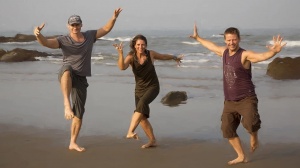
Can you tell our readers about your Yoga training school?
Yes it’s called Yoga Health Mandala. I built it with two friends of mine. We offer Qi Gong, sweat lodges, mobilization, injury management, rehabilitation – we bring all of that into the Yoga. So Scaravelli-inspired Yoga is the basis and we’ve created our own thing around it. The website is www.yogahealthmandala.co.uk
One last question. How do you share your ‘woo-woo’ side without coming off as crazy?
As long as it’s a nice woo-woo. People who say, “I’m a Shaman”. I run away from them, because we’re all shamans. We all transform energy.
I would say be brave enough to say what you believe in and be crazy enough and wild enough to say it. Have your feet on the ground and have discernment. If you can say it in a grounded way, in a way that can touch other people, then it’s believable. Not in a way that says, “I know better than you”. Our mind, spirit, soul are all in our body. There’s no separation.
Is there anything more you’d like to share with our readers? Any retreats/trainings coming up soon?
You’ve asked excellent questions, it’s been such a pleasure. I have two events coming up in Scotland with Yoga and Chavutti massage (massage by foot pressure). More information can be found on this link: https://www.helennoakes.net/events-list/
And Chavutti massage training in Greece, this August and October. Upcoming European Autumn tour beginning in November, in Germany, Switzerland, Finland and Ireland.
And 200-hour and 100-hour yoga Teacher Trainings in India and Finland in 2020. Details of all these will be posted soon on http://www.yogahealthmandala.co.uk/
And a New Year retreat in north Sweden under the Northern lights! 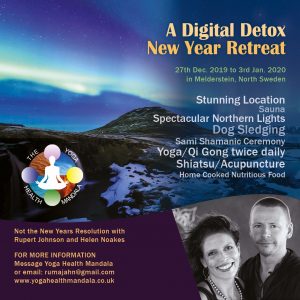
So there you have it! Hope you enjoyed reading, and let me know your thoughts in the comments! And feel free to Pin this post using the image below!
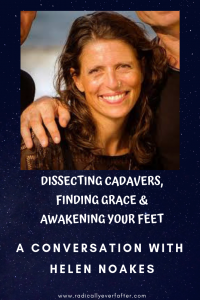
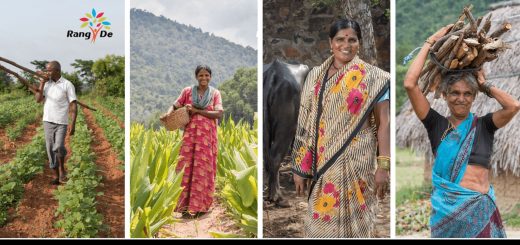

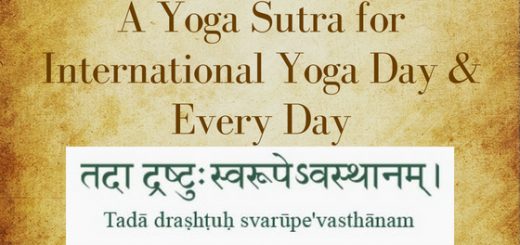


Brilliant post.
Thanks for all the information.
Keep posting such stuff.
Loved it !!
Great post, very insightful thanks for sharing.
Very interesting! I really enjyoyed reading it especially “So there’s a fluidity in your body, you haven’t turned it into a brick” this line, I feel relatable to it.
Very interesting! I really enjyoyed reading it especially about the fluidity in the body which we needs to turn into a brick.
Superb article.Very informative and insightful.Thanks for sharing.